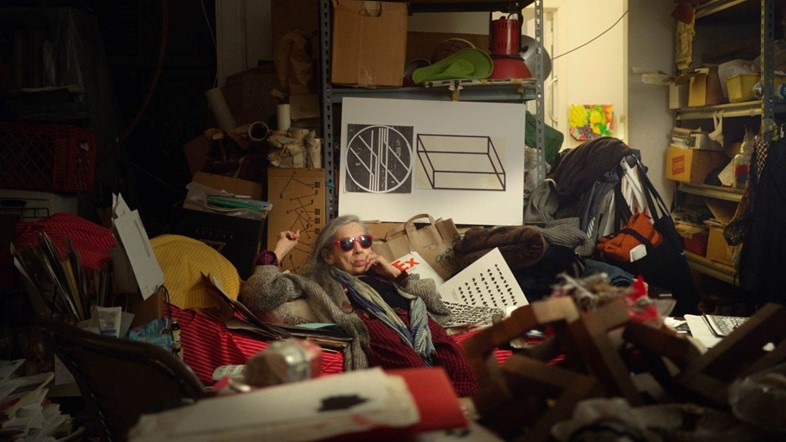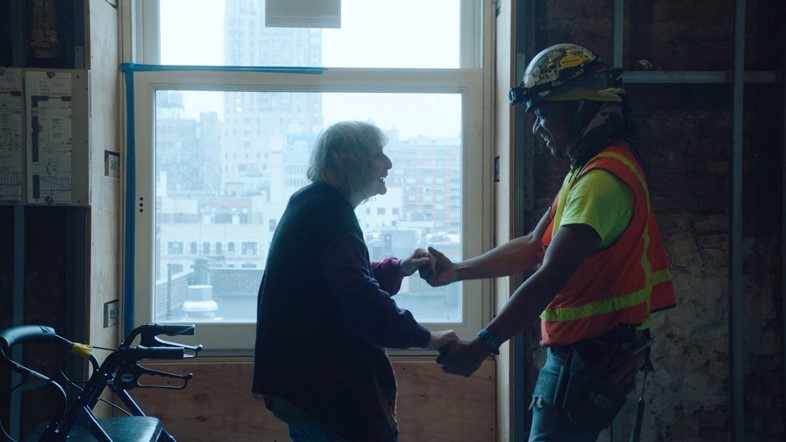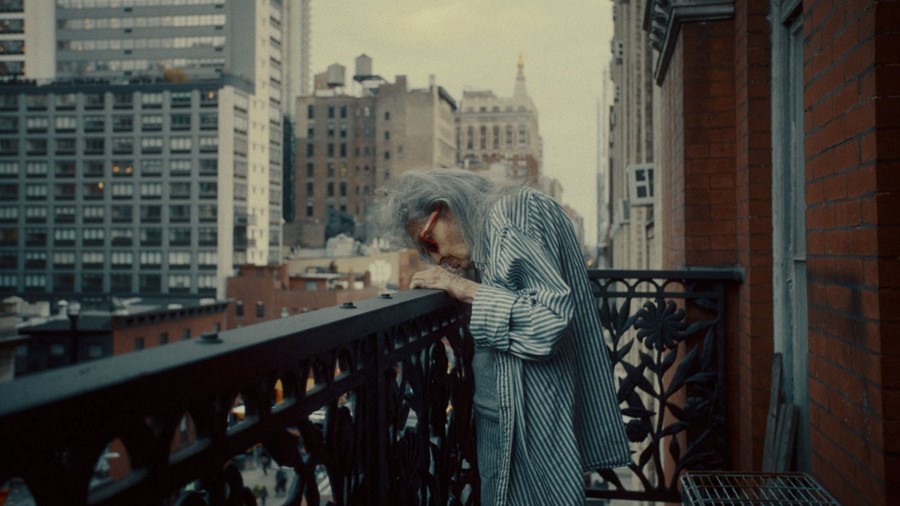As their new documentary about New York’s Chelsea Hotel is released, directors Amélie van Elmbt and Maya Duverdier talk about gentrification and why “underground independence is so important for our society”
While some establishments dream of having five stars, the Chelsea Hotel hosted a far greater number. In its heyday, the building, located on 23rd street in New York City, was the temporary home for musicians like Bob Dylan, Patti Smith, Jimi Hendrix, Bob Marley, Joni Mitchell, Mick Jagger, and Chet Baker. Within the hotel’s walls, Jack Kerouac feverishly typed On the Road, Stanley Kubrick and Arthur C Clarke dreamed up 2001: A Space Odyssey, and Miloš Forman penned his screenplay for One Flew Over the Cuckoo’s Nest, supposedly basing the asylum on the wild assortment of artists roaming the floors.
In the 1960s especially, the Chelsea Hotel served as a symbol for counterculture, forming the literal background of Andy Warhol and Paul Morrissey’s Chelsea Girls. After a brief romance with Janis Joplin, Leonard Cohen wrote his second song about the building, Chelsea Hotel #2, which launched with the immortal line: “I remember you well in the Chelsea Hotel.” For her 1992 book Sex, Madonna staged a photo shoot in – where else? – room 822. Conversely, the celebrity hotspot developed a darker reputation: Dylan Thomas died in his bedroom, having boasted that day he’d downed 18 whiskeys; Nancy Spungen, then 20, was discovered on a bathroom floor with a knife plunged through her body, allegedly at the hands of Sid Vicious.
An eerie new documentary about the building, Dreaming Walls: Inside the Chelsea Hotel, is about none of those people. Although the establishment closed in 2011 for renovation, a handful of residents remained in their dusty, crumbling rooms, creating art for an audience of practically no one – until two Belgian directors, Amélie van Elmbt and Maya Duverdier, decided to shoot them with a camera. Eschewing a typical talking-heads format and resisting YouTube-able archive footage (Mariah Carey did a music video there), the fittingly poetic, drifting film spies on the day-to-day activities of ageing, former bohemians with nowhere else to go, and the construction workers in the corridors who speculate that ghosts haunt the vicinity.
“We wanted to stay with the residents that really stayed there all their lives,” van Eltmbt tells me over Zoom from Paris – an alternative to a traditional in-person junket at the Chelsea Hotel. “So it’s not Joni Mitchell, Patti Smith, or Bob Dylan. For us, it was a political engagement to make the people who participated to create those big names really visible. Without them, Bob Dylan wouldn’t have been Bob Dylan; Patti Smith wouldn’t have found her way. You don’t become a great artist from scratch. It’s because a variety of people exchange their creativity.”
Van Eltmbt and Duverdier initially planned to end the film with the hotel’s grand reopening, but couldn’t wait that long. Instead, the film’s patient pacing highlights a sense of limbo amongst the residents, many of whom are unsure if they’ll be able to afford the presumed rise in prices after the luxury makeover. “When we met the people, we understood that they were still dreaming of their lives as artists,” says Duverdier. “It was important for us to reproduce their minds with the dreamy atmosphere.”

Current residents in the film include Bettina Grossman (she died in 2021), who once accumulated so much art in her room that she slept in the corridor, and Merle Lister, a celebrated choreographer who moved on to the seventh floor in 1981. Today, some rooms can be rented for extortionate prices, while the long-term inhabitants believe the owners are pressuring them to leave. Ironically, without the likes of Lister, the building wouldn’t be able to financially capitalise on its coolness factor.
Like the warehouse in Charlie Kaufman’s Synecdoche, New York, the Chelsea Hotel thus becomes a microcosm of its surroundings. “It’s the story of New York, this gentrification,” says van Elmbt. “Underground independence is so important for our society. People forget that we need the counterpower of artists who gang up together. It’s funny, the eccentric residents have become like zoo characters. People come because they want to see the last bohemians from the 1970s and 1980s. It’s nice that people come to talk to them and engage with them. But it’s so expensive to have a room there. If only the rich are coming in, you can’t have such a creative ground.”
The duo shot Dreaming Walls across two years, then spent a third year on post production, some of which was done on Faro Island (aka Bergman Island, where Ingmar Bergman lived and wrote several masterpieces) to soak up the historic surroundings. During the editing process, Martin Scorsese watched a cut and offered to assist with the promotion. He’s thus listed as an executive producer – effectively a “label”, according to van Elmbt, to boost theatrical distribution.

Not so enthused about the documentary were the hotel’s current owners. “The people we worked with loved the film and felt super-respected,” says van Elmbt. “But the owners, when they said yes at the beginning, it was just Maya and I and a really small camera. They didn’t think the film would be broadly viewed. When it became a real film, they started feeling anxious about the way we portrayed the place, because they know the way they sometimes act and put pressure on the residents is not legal. They don’t like that some residents say they’re frightened by them, or they tried to move them to the first floor.”
Throughout our conversation, both directors lament the absence of a proper replacement for the Chelsea Hotel. Still, I wonder: haven’t artists simply migrated online? “Maybe,” says Duverdier. “But for me, it’s sad, even if the internet is very powerful.” “There are houses of artists in Belgium,” says van Elmbt. “But the rent is so high. As an artist, if you live in those spaces, you know you can be kicked out. Now, you cannot enter the Chelsea Hotel without money. This is the sad thing, because a lot of minorities are super important to have at the front of the stage, because they have a certain knowledge that we as white artists don’t have. At the Chelsea, there would be neighbours you would have never met, and there’s a connection. Artists came because art was a necessity for them. We wanted to film art not as a value, but as a way of breathing, as a way of living. The internet is interesting for knowledge and resources, but we need to be physically together.”
“But during our research, we discovered that the Chelsea Hotel has been reproduced on Second Life,” says Duverdier. “You should have a look. The ghosts are there, too.”
Dreaming Walls: Inside the Chelsea Hotel is out now.
